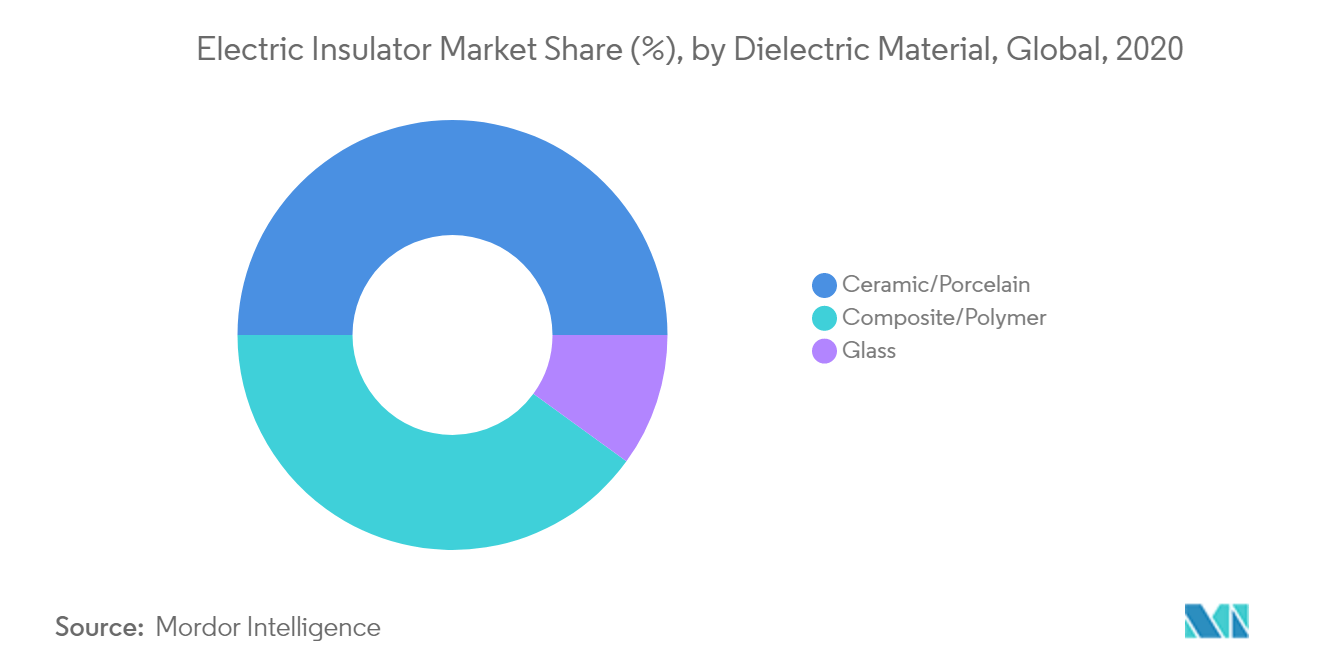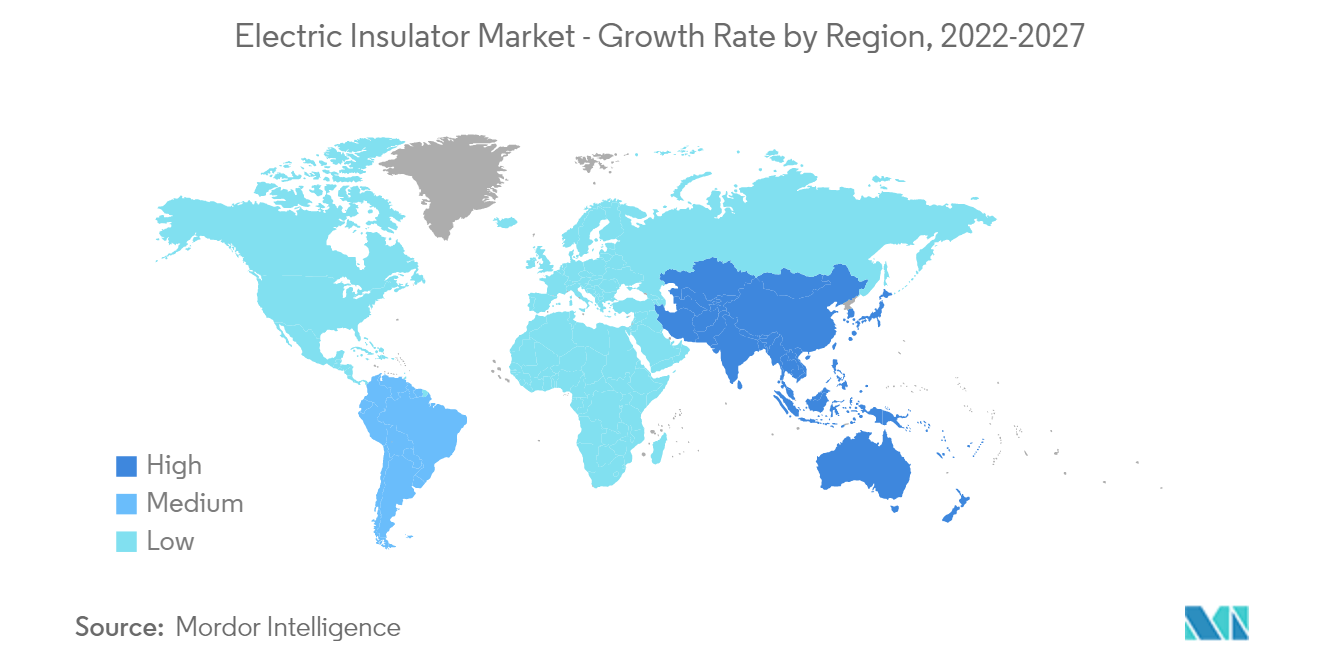Market Trends of Electric Insulator Industry
This section covers the major market trends shaping the Electric Insulator Market according to our research experts:
Increasing Demand for Ceramic/Porcelain Type Insulators
The ceramic/porcelain type dominated the electric insulator market in 2020. Electrical insulators made of ceramic are primarily used in high voltage insulating systems. Furthermore, these insulators can be custom manufactured to be applied in high-temperature resistors.
Ceramic insulators usually have a higher dielectric constant, which does not vary much with varying temperatures, unlike glass, which conducts more electricity at elevated temperatures, i.e., the dielectric constant of glass varies with temperature.
The demand for ceramic electrical insulators is expected to be driven by the expanding transmission and distribution network, supported by growing energy consumption and penetration of renewables in the global energy mix, among various other factors.
It is expected that by the end of 2022, the renewable energy capacity growth would be as high as 90%, out of which a significant fraction is likely to come from big utility-scale projects, which, in turn, is a positive indicator for the transmission and distribution market, and consequently offers a bright market outlook for the ceramic electric insulators over the coming years.

Asia-Pacific to Dominate the Market
Asia-Pacific dominated the electric insulator market in 2020 and is expected to continue its dominance over the coming years. The demand for electricity in the region is witnessing high growth, owing to rapid industrialization and urbanization. This, in turn, has resulted in an increment in the power generation capacity and a rapid expansion of transmission and distribution (T&D) infrastructure in countries such as China, India, and Japan. For instance, Adani Group's Adani Transmission Limited (ATL) announced that it had completed the construction of an 897 circuit km power transmission line in Uttar Pradesh, India, which is expected to drive the demand for electric insulators in India.
China, in its 13th Five Year Plan for Electricity (2016-2020), aims to raise non-fossil fuel's share of total electricity production from 35 to 39% by 2020. By 2030, one-fifth of the country's electricity consumption is forecast to come from non-fossil fuel sources.
The Chinese government has selected renewable energy and natural gas to fill the gap created by the shutdown of coal-based fired power plants and meet the increasing electricity demand. The development of the renewable sector is expected to continue over the coming years, and China is anticipated to account for more than 40% of the global renewable energy mix by 2022. This is expected to result in the development of T&D infrastructure to deliver renewable energy to end users, hence driving the demand for electrical equipment, such as electric insulators.
The T&D expenditure in India is witnessing significant growth due to increasing power generation capacity and privatization of the distribution sector. During 2020 (up to October 2020), 11,921 circuit kilometers (ckm) of transmission lines (220 kV and above) have been added in India. During the same period, transformation capacity addition has been 35,760 MVA, which has resulted in huge demand for electric insulators.
China has also witnessed significant growth in EV charging stations. As of December 2021, a total of 74,700 charging stations had been deployed in China, resulting in significant demand for electric insulators.
Therefore, factors such as integration of renewable energy sources, expansion of the existing T&D infrastructure, and deployment of electric vehicle charging stations are expected to drive the electric insulator market in the region over the forecast period.


